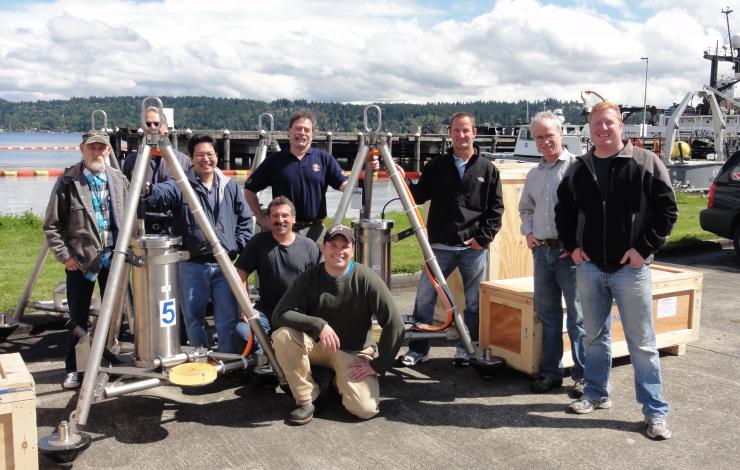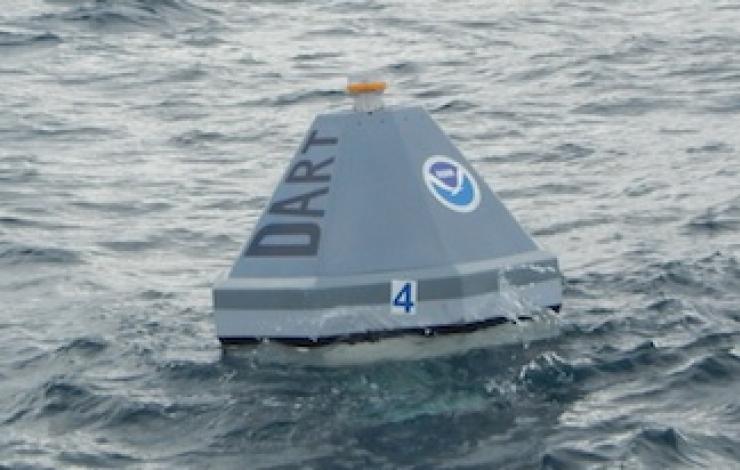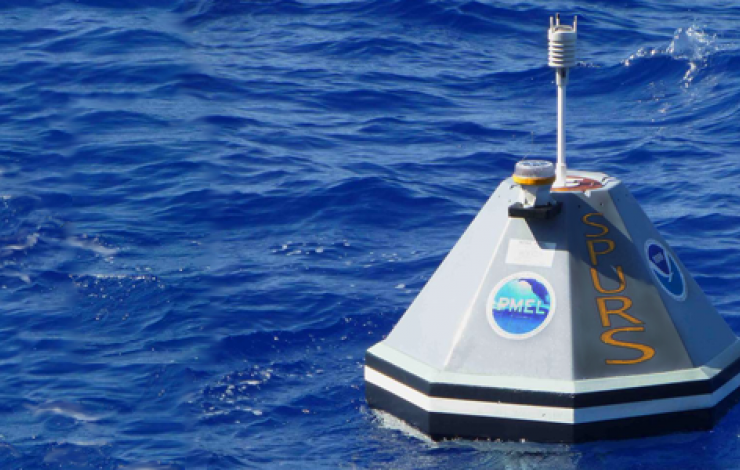What's New Archive
![]() The U.S. government is closed. This site will not be updated; however, NOAA websites and social media channels necessary to protect lives and property will be maintained. To learn more, visit commerce.gov.
The U.S. government is closed. This site will not be updated; however, NOAA websites and social media channels necessary to protect lives and property will be maintained. To learn more, visit commerce.gov.
For the latest forecasts and critical weather information, visit weather.gov.
Scientists and engineers from PMEL's Vents Program successfully flew an ocean glider for exploring for underwater volcanic plumes and eruptions in the South Pacific on May 8. Over the two day mission, the glider travelled about 50km and was "flown" by engineers located 5000 miles away in Washington and Oregon.
You can read more about this glider mission, including an update on the active underwater volcano, West Mata, on the Lau Eruptions blog.
PMEL scientists, Dr. Tim Bates and Dr. Patricia Quinn, will lead the US component of the Coordinated Investigation of Climate-Cryosphere Interactions (CICCI) project based out of Svalbard, Norway during the month of April. PMEL will fly two Unmanned Aerial Systems (UAS) equipped with sensors to measure aerosol properties to help understand the processes controlling the distribution of black carbon in the Arctic atmosphere.
Stay up to date with the mission by following the blog and visit PMEL’s Atmospheric Chemistry page and the CICCI project page for more information.
Scientists and engineers at PMEL recently returned from an expedition in the Arctic where they launched two small, new, remotely-operated, unmanned aircraft to measure black soot. The soot is produced by burning diesel fuel, agricultural fires, forest fires, and wood-burning stoves, and is transported by winds to the Arctic, where it darkens the surface of snow and ice, enhancing melting and solar warming.
Visit the Atmospheric Chemistry page for more information and watch the YouTube video above.
Last month PMEL's carbon and engineering groups deployed two autonomous wave powered research vessels to study ocean acidification along the Washington and Oregon coasts. These seven foot long vessels automatically measure surface water and atmospheric carbon dioxide, pH, temperature and salinity along a path determined by PMEL scientists who guide the vessels from the laboratory via satellite. This maiden voyage for these vessels is coordinated with traditional sampling approaches to ensure that these new technologies make the same high-quality measurements that are PMEL’s hallmark.
PMEL engineers have successfully deployed two moorings in the Atlantic Ocean as part of NASA’s multi-year Salinity Processes in the Upper Ocean Regional Study (SPURS). The moorings are the first to a PMEL invented device, called a prawler that crawls up and down the mooring line measuring temperature and salinity along the way. The prawler, about the size of a paint can, will measure the upper 1,600 feet of the ocean and uses wave energy to crawl back to the top to begin another profile.
For more information see the YouTube video above and read the ‘Prawling’ around in the Atlantic news story.
PMEL engineers and JISAO and CIMRS scientists delivered several instruments to the University of Washington during the month of May that will be plugged in to the Regional Scale Nodes cabled observatory at Axial Seamount later this summer. Building on the success of PMEL’s NeMO seafloor observatory PMEL, 5 bottom pressure recording and tilt recorders and 3 time series vent fluid samplers for chemistry and microbiology built at PMEL will be part of the Ocean Observatory Initiative (OOI) cabled observatory program funded by the National Science Foundation.
The instruments will be plugged into the cabled observatory this summer using the ship R/V Thomson and the ROPOS Remotely Operated Vehicle (ROV).
PMEL engineers deployed a Deep-ocean Assessment and Reporting of Tsunamis (DART®) 4th generation monitoring system off the coast of Oregon last week. This system is an enhanced version of the DART®-ETD (Easy to Deploy) technology developed at NOAA-PMEL that incorporates advancements in sensors, software and power management to detect and measure near-field tsunami with unprecedented resolution. An improved pressure sensor will be able to detect and measure a tsunami closer to the earthquake source providing valuable information to warning centers even faster.
Please visit the DART® website for more information on this technology.
PMEL’s Dr. Billy Kessler is currently participating in NASA’s Salinity Processes in the Upper Ocean Regional Study (SPURS) in the Atlantic Ocean. SPURS addresses the role of the ocean in the global water cycle. PMEL engineers have contributed to this study by developing and deploying two Prawler (Profiler + Crawler) equipped moorings. The Prawler device, which is attached to the mooring line, uses wave-powered energy to crawl up the line, taking temperature/salinity measurements along the way.
You can read more about how the Prawler works and view the data in near real time on PMEL’s Engineering Development Division website.





